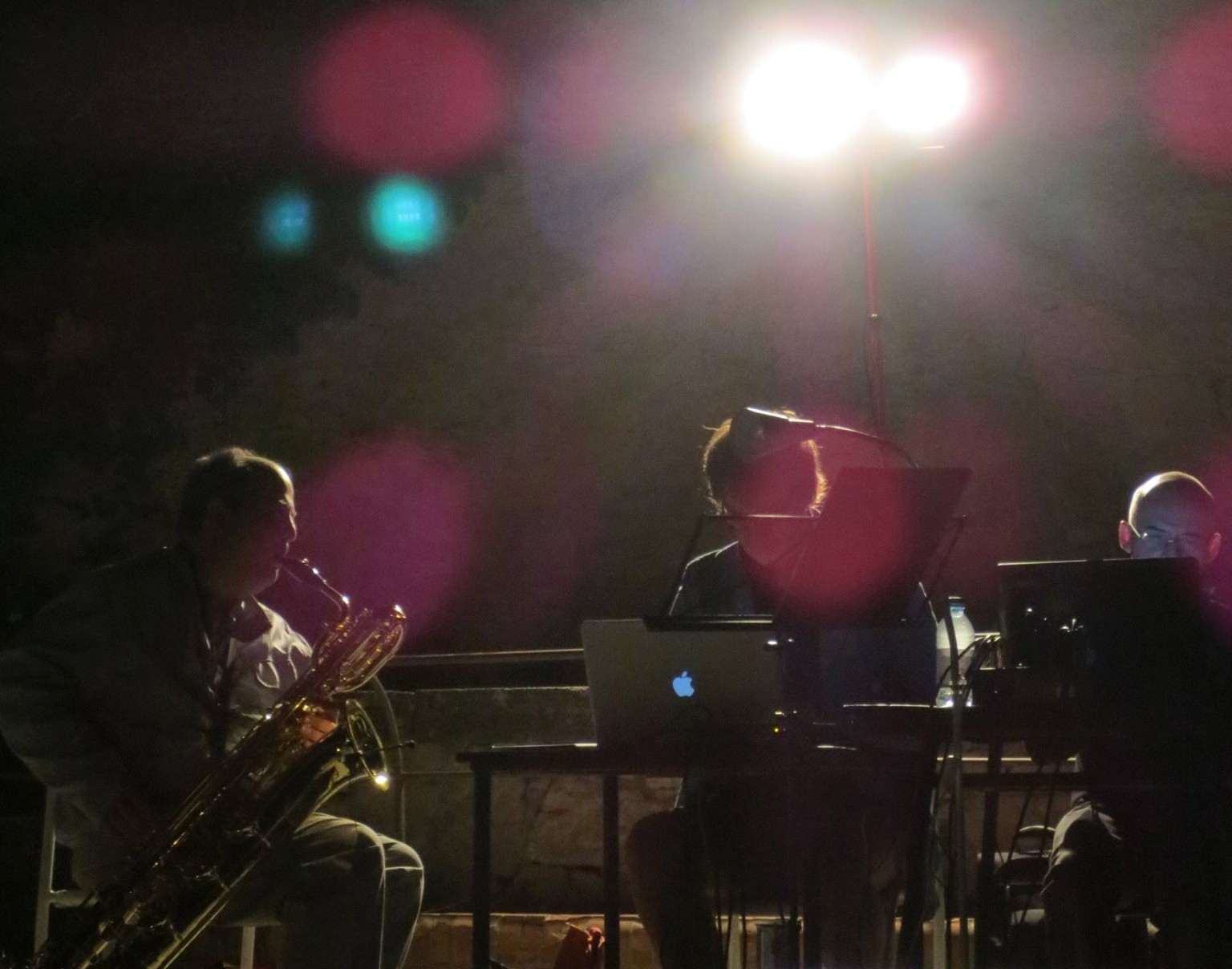Category: composition documentation
-

/open/control/1
I recently finished the first piece in what I hope will be a series of works which I would describe spectacularly unspectacularly as note music. There are no explicit electronics in these works and the instrumentation is open. Like some parts of lusted fleeting, the main algorithmic approach used cellular automata, or more specifically Wolfram Codes,…
-
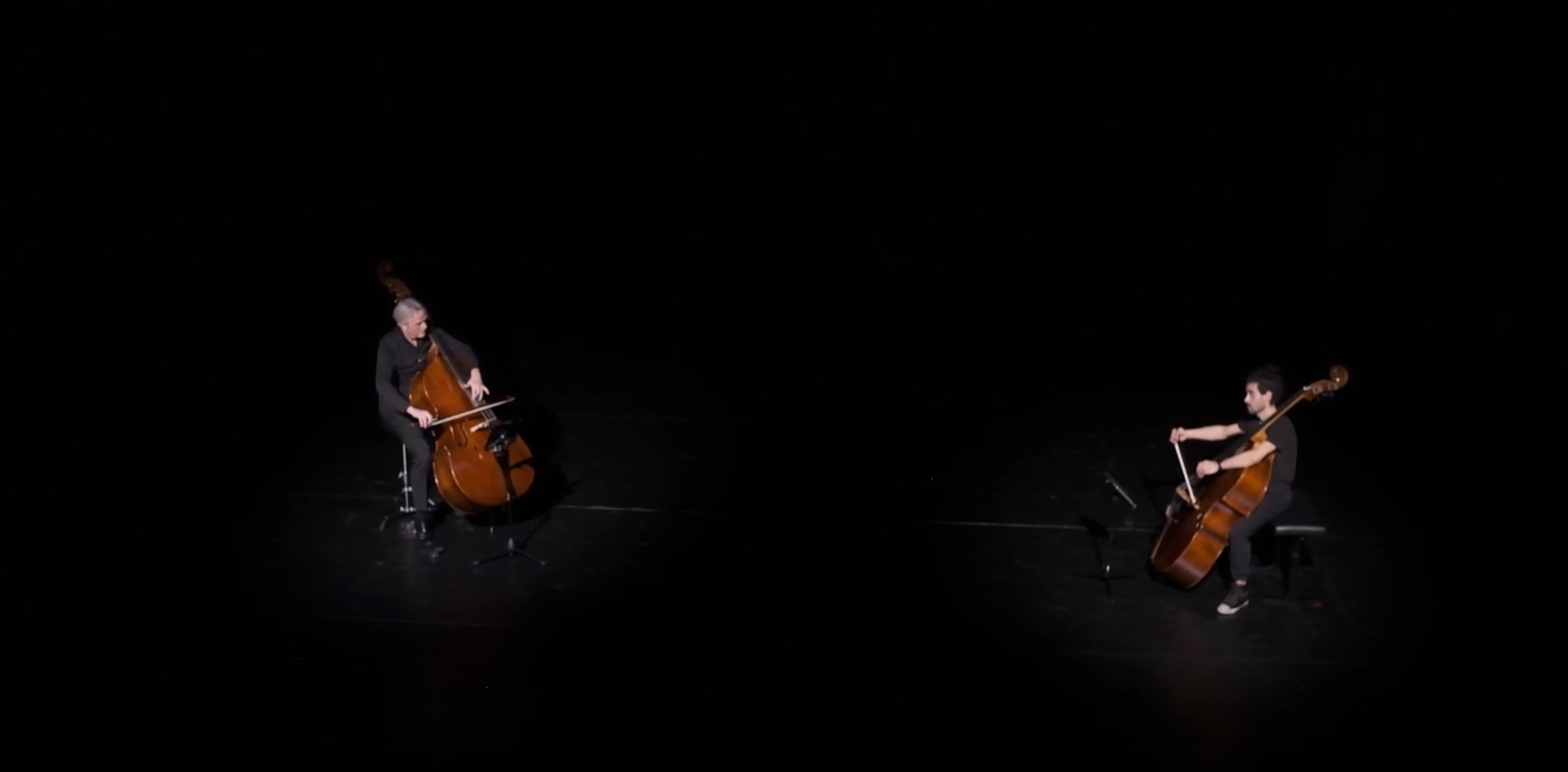
great symphony in c
Javad Javadzade asked for a piece for two double basses and electronics. He wanted to be able to perform it alone also, so ended up having to trigger electronics way more than is usually acceptable. Be careful what you wish for, I suppose. It was a good test of current digital resources as the performance…
-
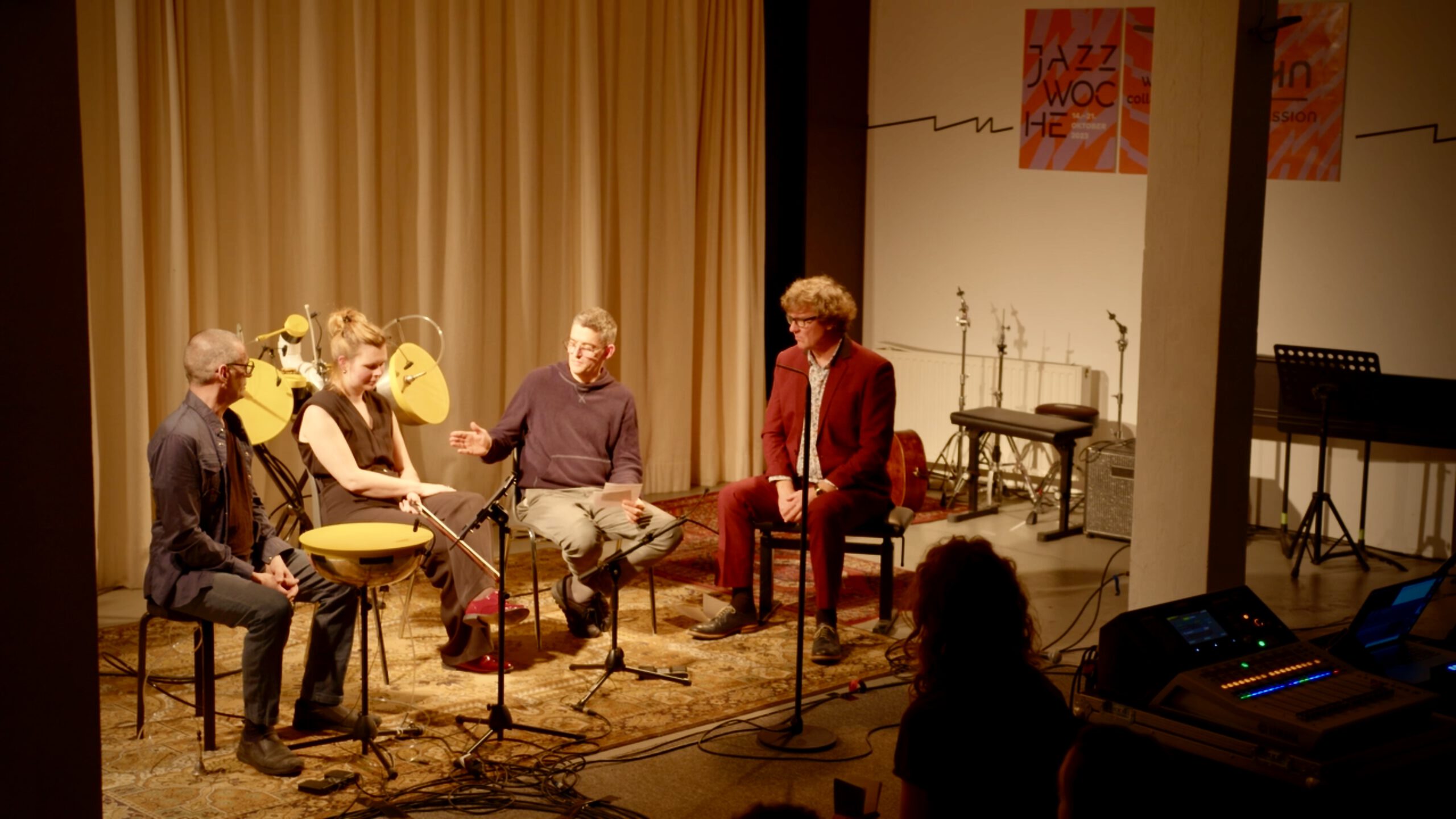
naked empty silence in Hannover
My new piece for cello (Martha Bijlma), electronics, and Jean-Francois Laporte’s self-made compressed-air-driven instrument the Bol was premiered on November 19th 2023 at the Rampe in Hannover, Germany. This was part of the Zeitlupe series initiated by the Hannoversche Gesellschaft für Neue Musik. In these concerts, a new work is presented twice, with other works…
-
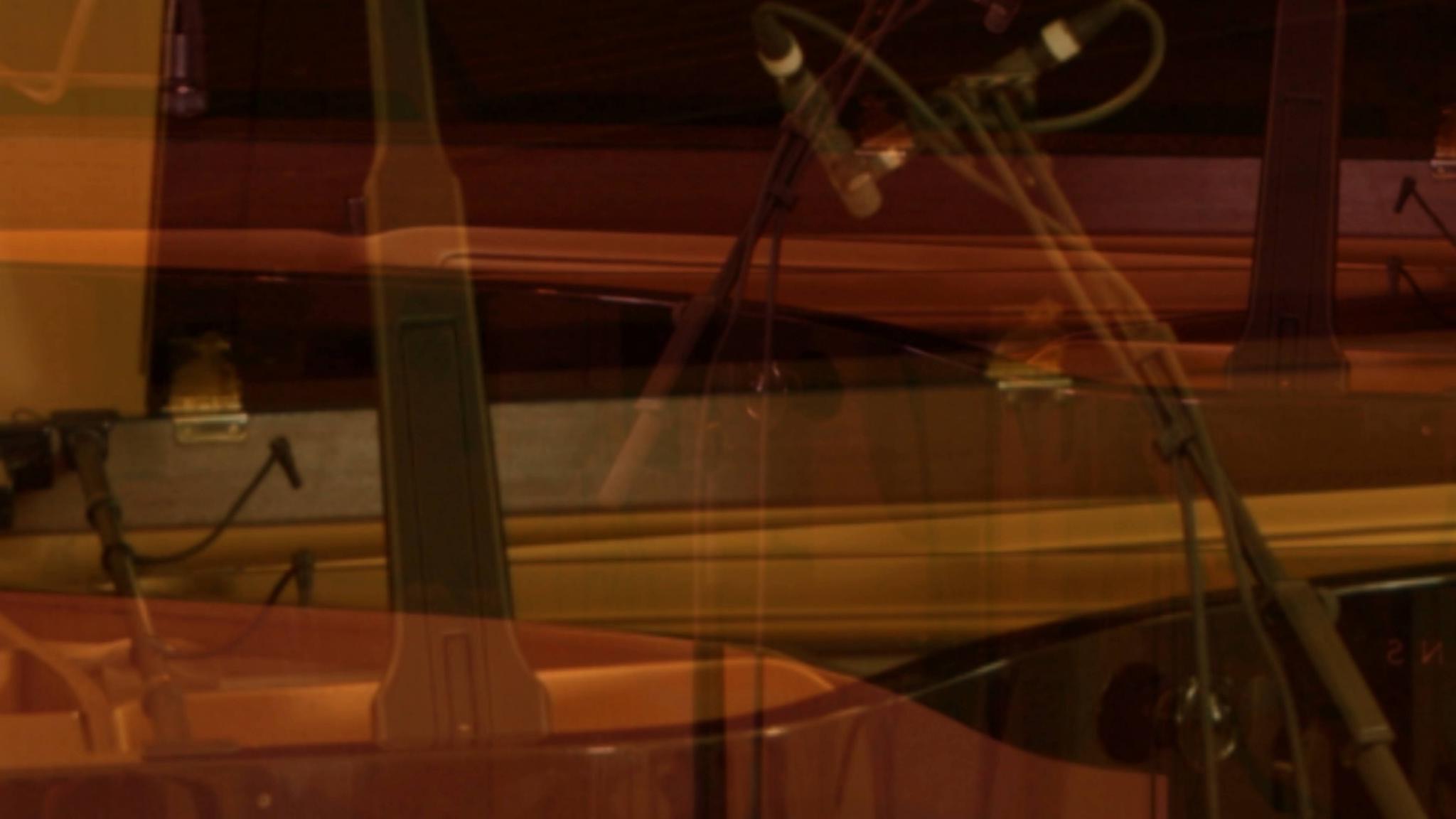
making sense of: recording
On July 20th 2023, with the help of Jorge Vallejo, Karin Schistek and I recorded my solo piano piece making sense of at the Folkwang University’s Tonaufnahmestudio. There are no electronics in this piece but Jorge did make a single-camera video recording—with some music manuscript paper flourishes after the recording was done—which Karin then used…
-
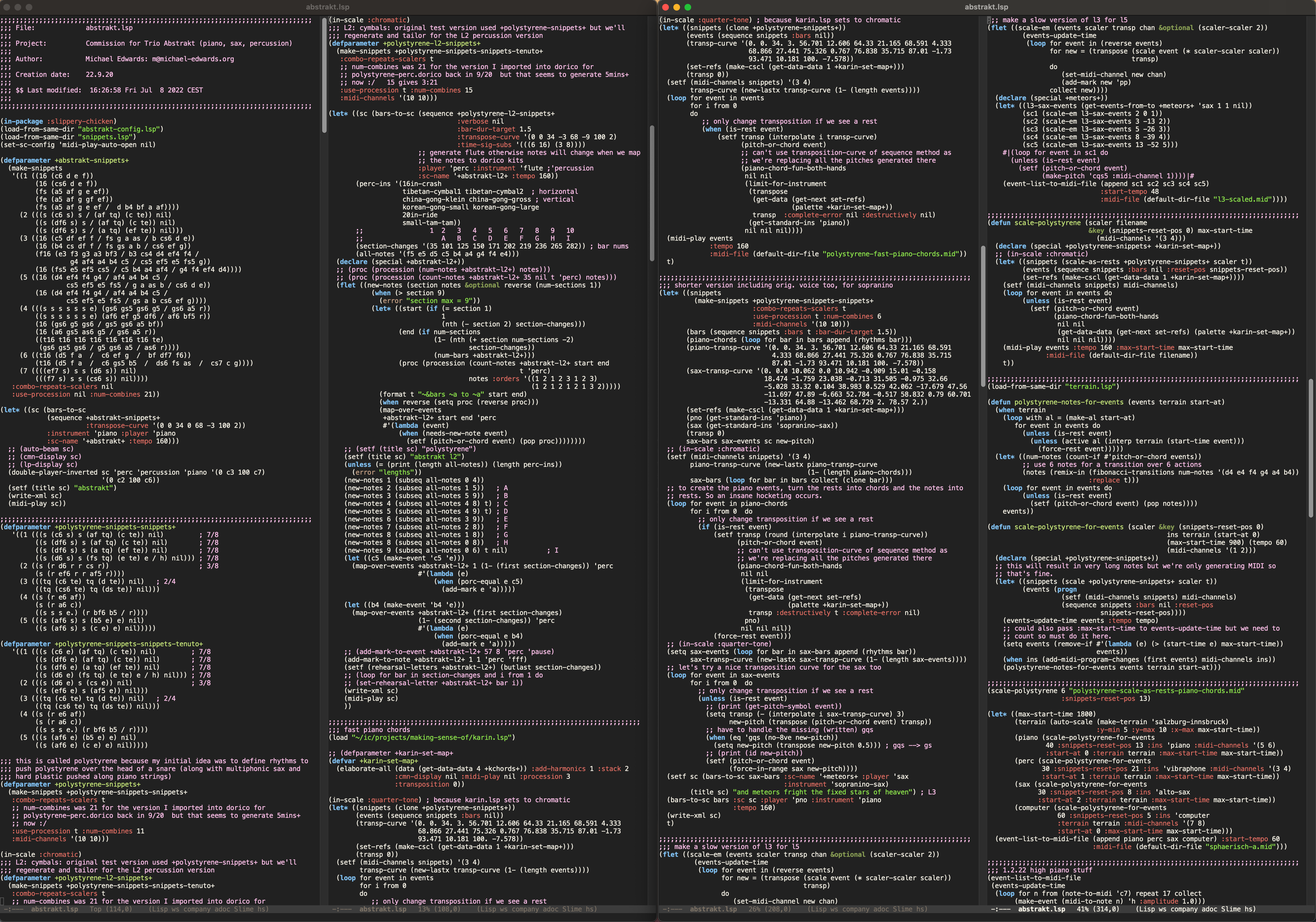
in competence: algorithms
Anyone who knows my work can guess that in competence was substantially made with my slippery chicken algorithmic composition software. A lot of free-form editing and development of score materials were made in Dorico. The 5th-order Ambisonics sound files were made, collated, and mixed in Reaper using IEM’s plugins. My image-to-sound algorithms were the main new…
-
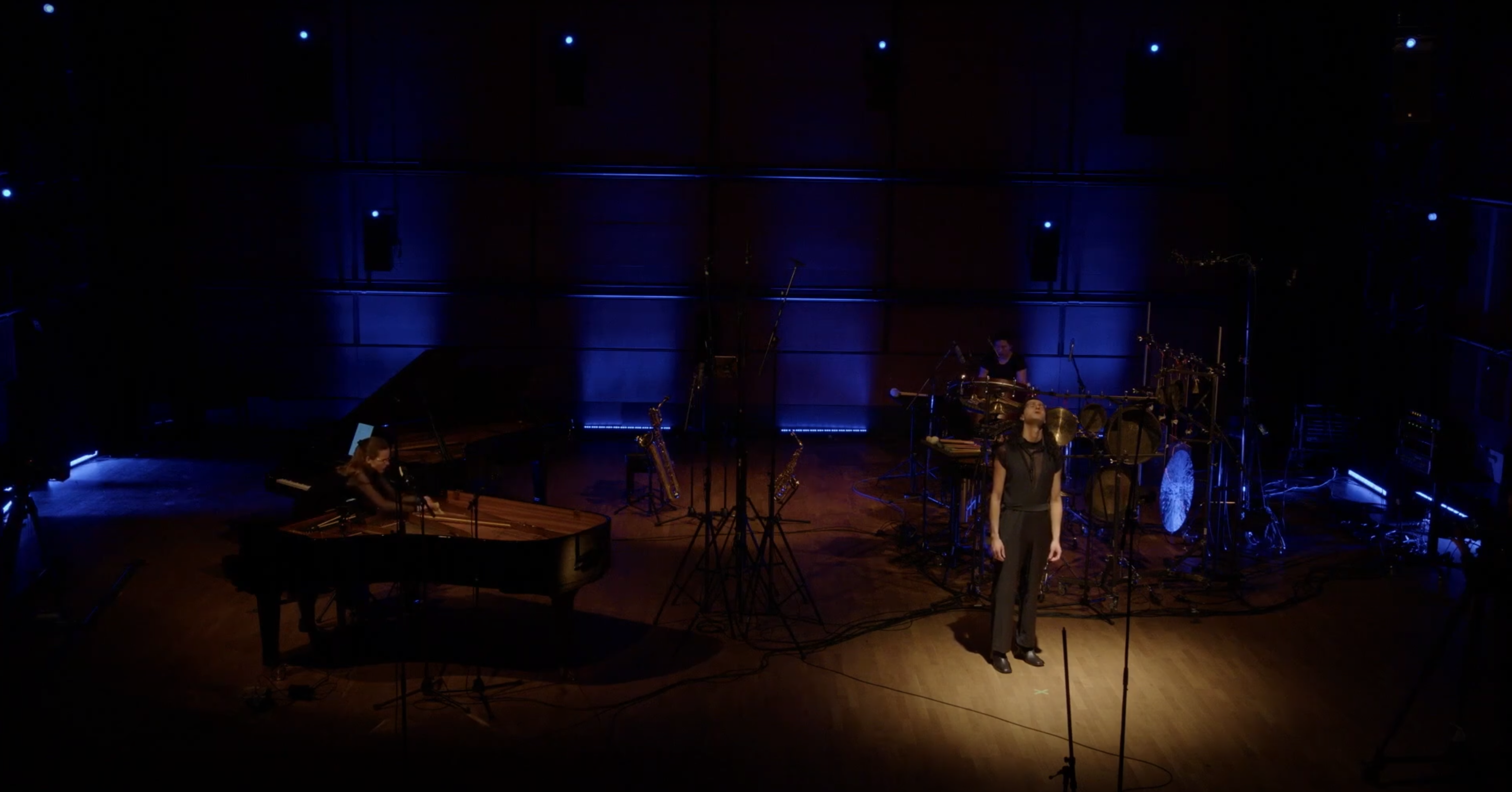
in competence: ZKM recording
From the 18th-22nd December 2022 Trio Abstrakt and I rehearsed and recorded in competence in the Kubus of ZKM Karlsruhe. This c. 70-minute through-composed work was commissioned by Trio Abstrakt and premiered by them, just prior to the recording, at the Alte Feuerwache in Cologne, on December 3rd. Programme notes in English and German are available…
-
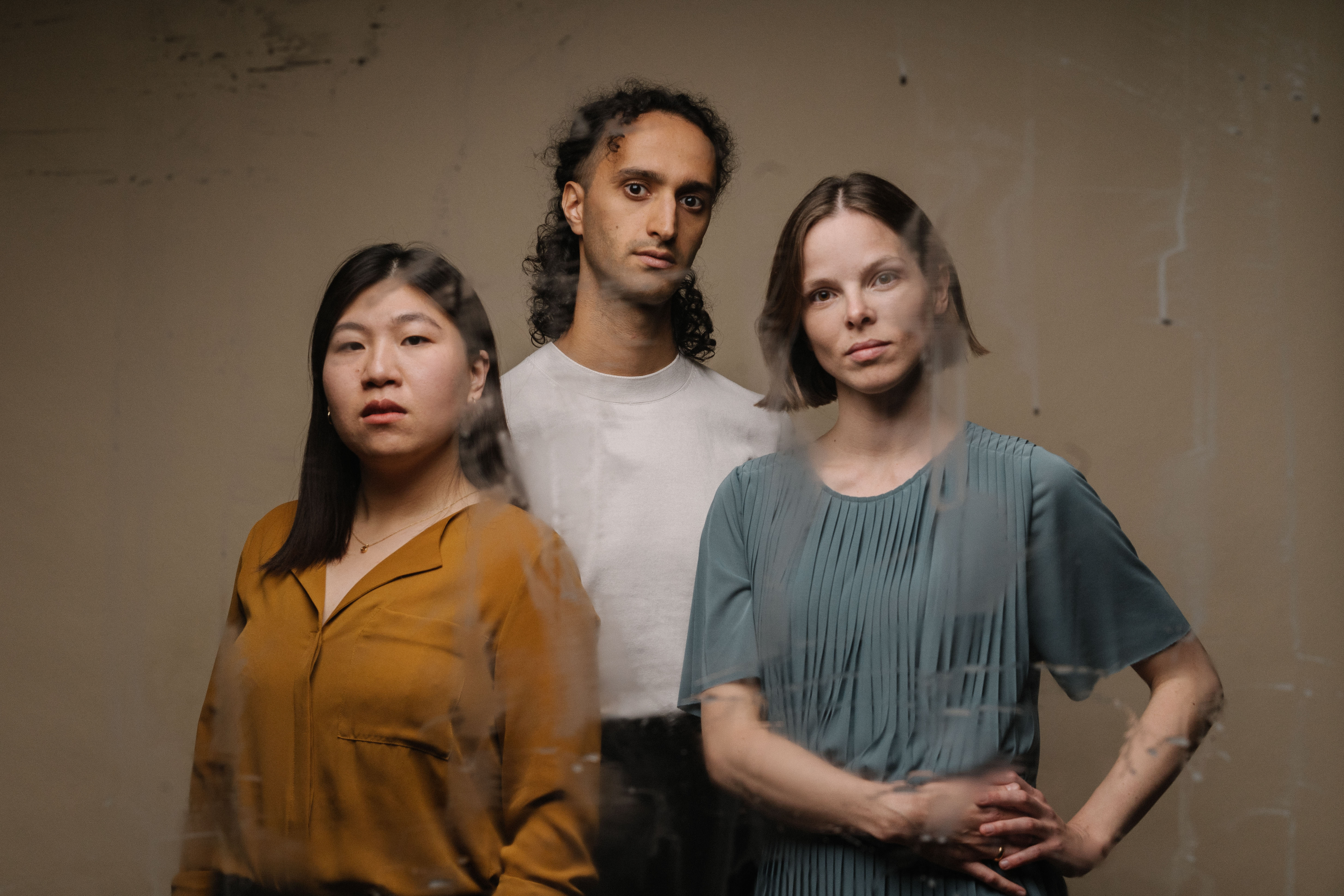
image to sound synthesis
Back in the early 90s I experimented with extremely primitive translations of various data sets into sound. The most basic translation of all is taking a computer file of any provenance (plain text, image, etc.), adding a standard wave file header and ‘calling it a sound file’. For instance, whilst programming and debugging C code…
-

spem in alio numquam habui
On February 18th 2022, in the stunning Red Dot Design Museum in Essen, my new piece for 41 consort tenor recorders and tablets was premiered in a concert entitled Surrounding Sound Systems celebrating Folkwang Recorders and the career of Ulrike Volkhardt—Ulrike was retiring at that time from her professorship at the Folkwang University of the Arts. The idea…
-
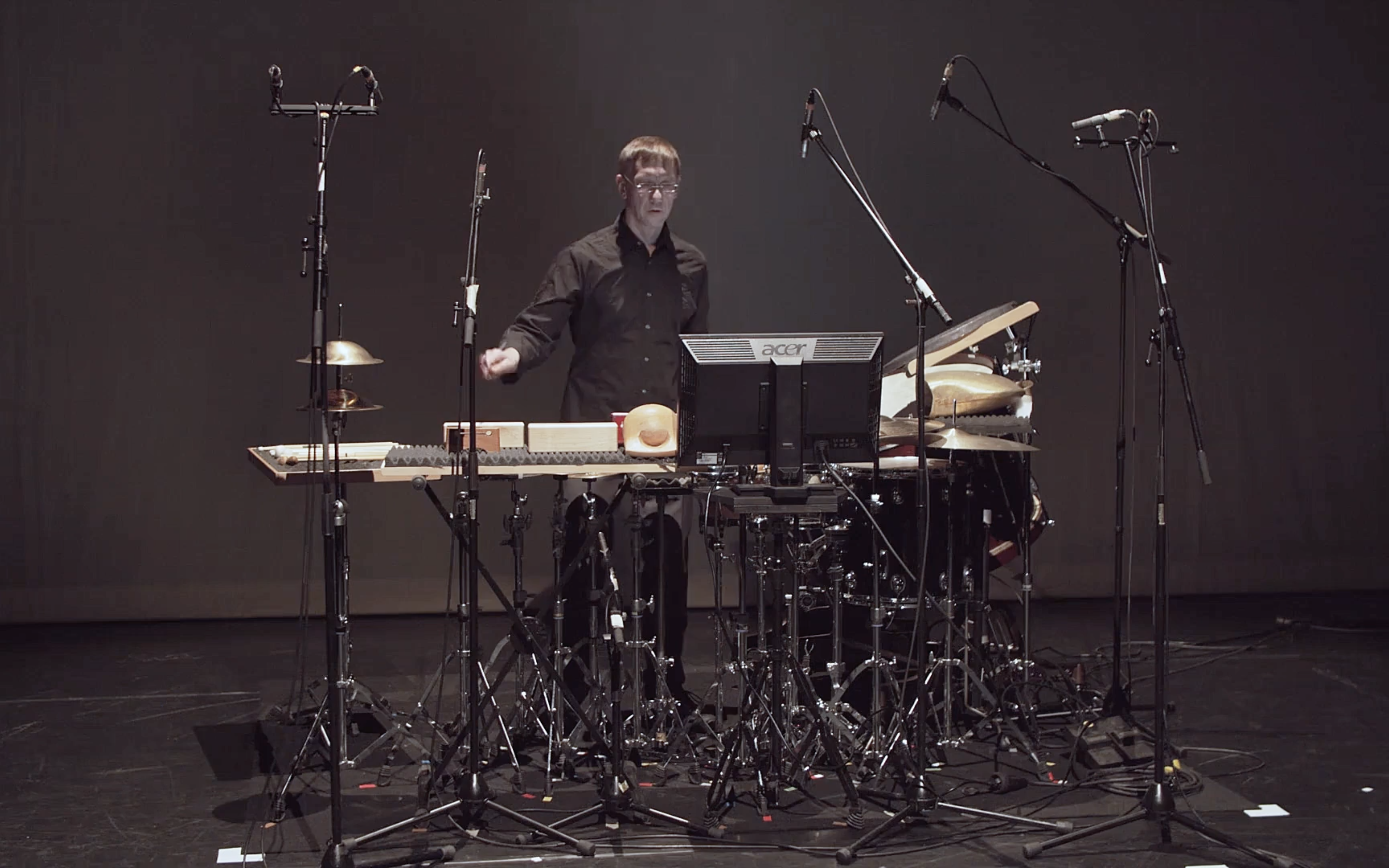
ma bell premiere (and recording with Ambeo mic)
On January 10th 2022 Michael Pattmann premiered ma bell, a reworking of ma bel. For one beautiful bell and four percussion groups consisting of six objects each of wood, metal, drum, and plate plus computer (the latter producing 3rd-order ambisonics surround sound) this is essentially a piece for percussion and sampler, in the form of…
-
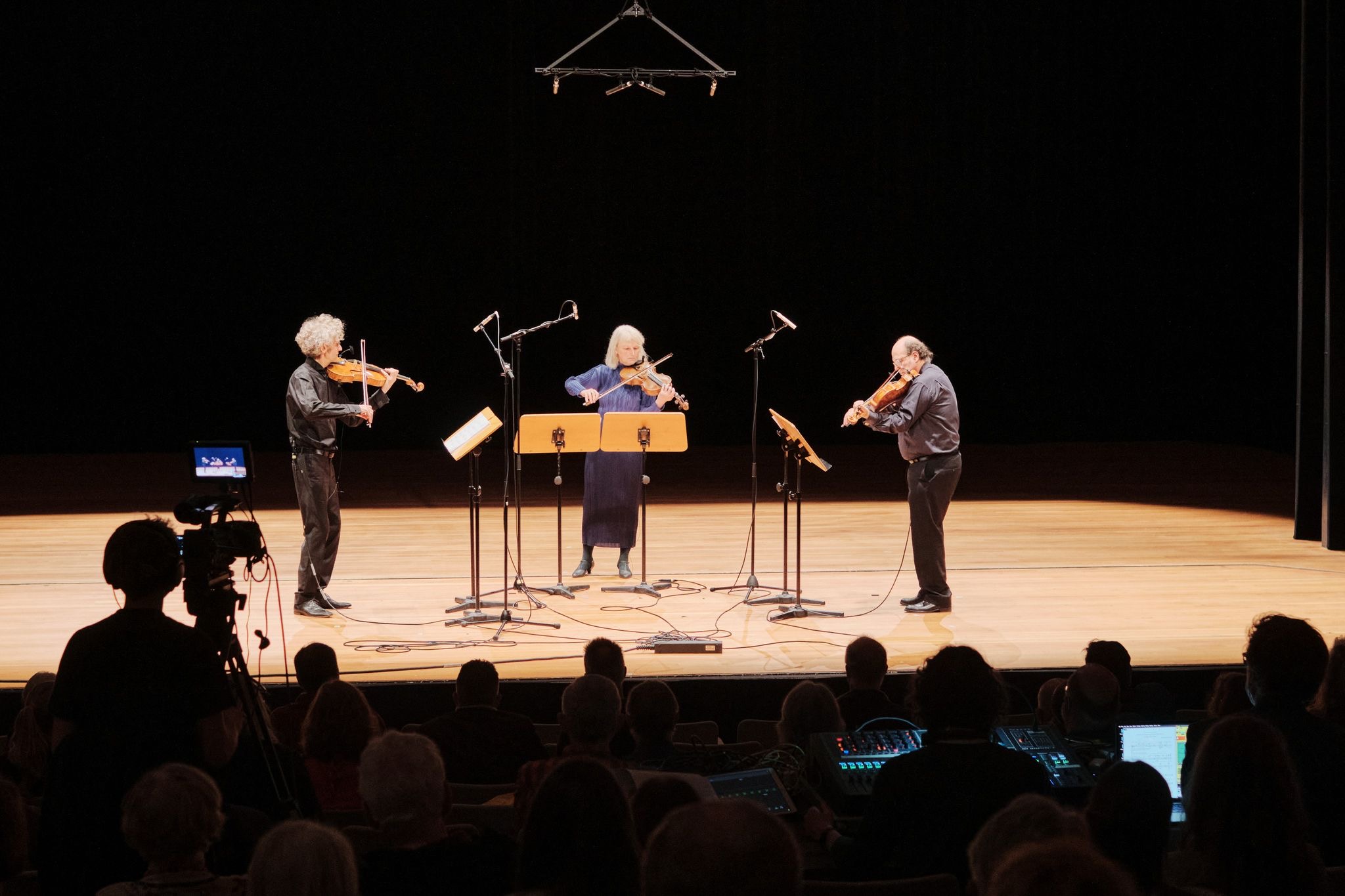
seven rotations of seven for three premiere
The premiere of my seven rotations of seven for three (triple doubles) for three violas and electronics was premiered at the NOW! Festival on October 30th 2021. The piece had a bit of a difficult gestation period. I was planning on using my new live electronics system vivos for this piece but that would have…
-

Kla4
Kla4 is a piece by Michael Edwards, Thomas Neuhaus, Dirk Reith, and Günter Steinke for four self-playing pianos, e.g. Yamaha Disklaviers, as in the video below. Kla4 was presented over several evenings as an installation during the NOW! Festival, Essen, from October 23rd to 27th 2019. All four composers contributed four short pieces that were…
-

hyperboles 6 for Ensemble S201
On June 11th 2021 at the RüBühne, Essen, Ensemble S201 gave the premiere of the sixth installment of my hyperboles series before repeating the concert on August 12th at the Europäische Kunstakademie Trier. Like hyperboles 3, for saxophone quartet, this version departs from the initial conception of purely algorithmic music for solo instrumentalist and computer.…
-
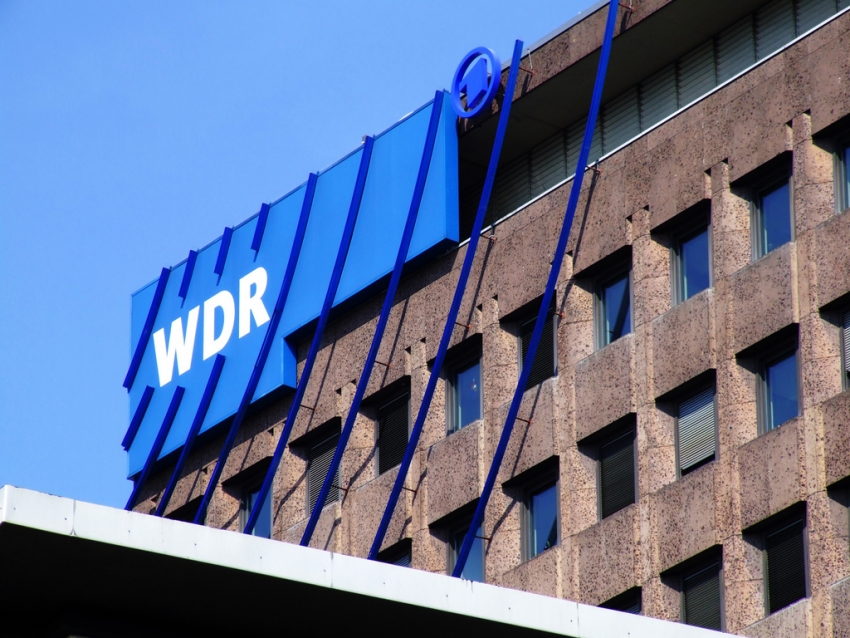
WDR Broadcast on Electronic Composition @ ICEM (in German)
On September 21st 2020 I was a guest of Johannes Zink and Frank Hilberg at WDR Cologne. Johannes and I spoke about the Institute for Computer Music and Electronic Media at the Folkwang University of the Arts, Essen, in particular the compositions of my students of Electronic Composition there (Tamon Yashima, Sebastian Wendt, and Tim…
-
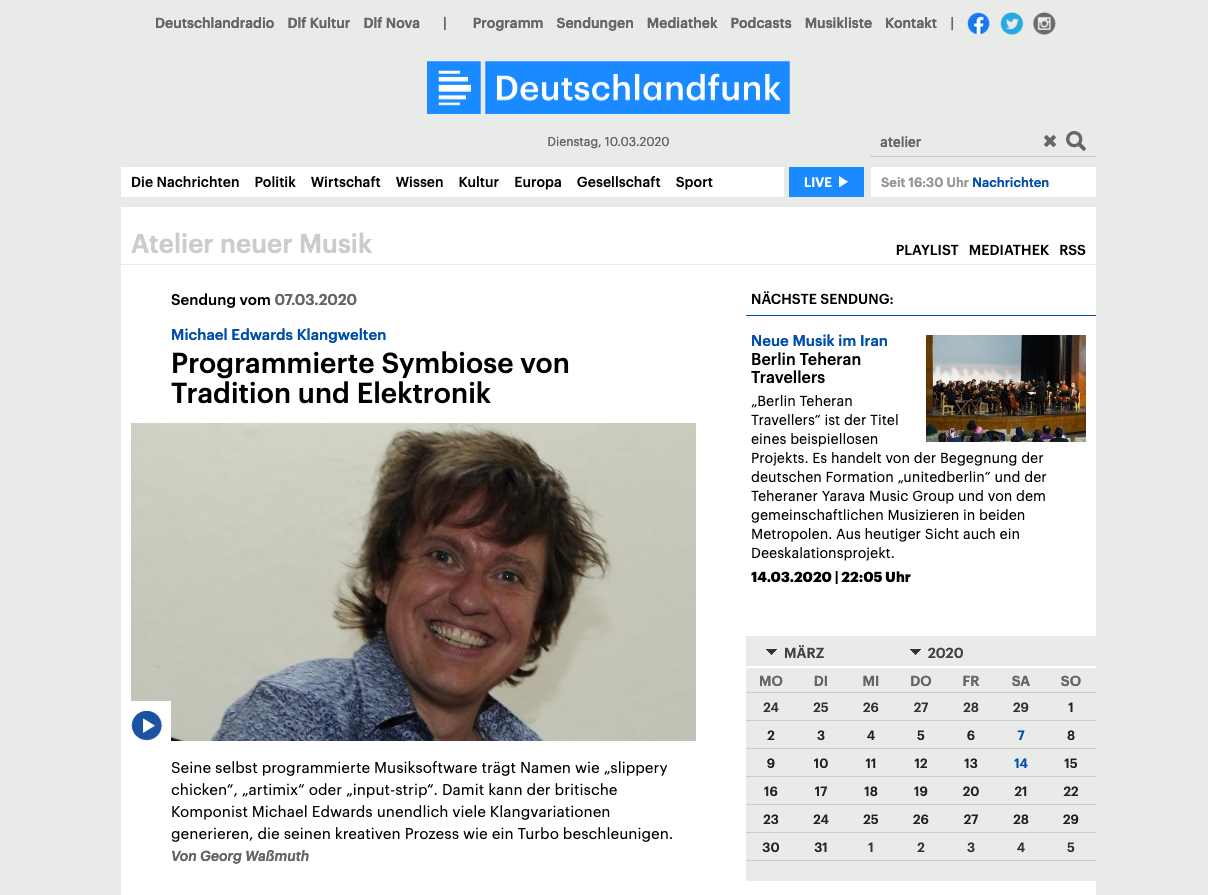
Portrait in Deutschlandfunk (in German)
Last October, Georg Waßmuth contacted me out of the blue to arrange an interview session in preparation for a portait broadcast about my career and music as part of the “Deutschlandfunk Atelier Neuer Musik” series. We met at the Folkwand University of the Arts On December 5th and talked about all manner of things. Georg…
-
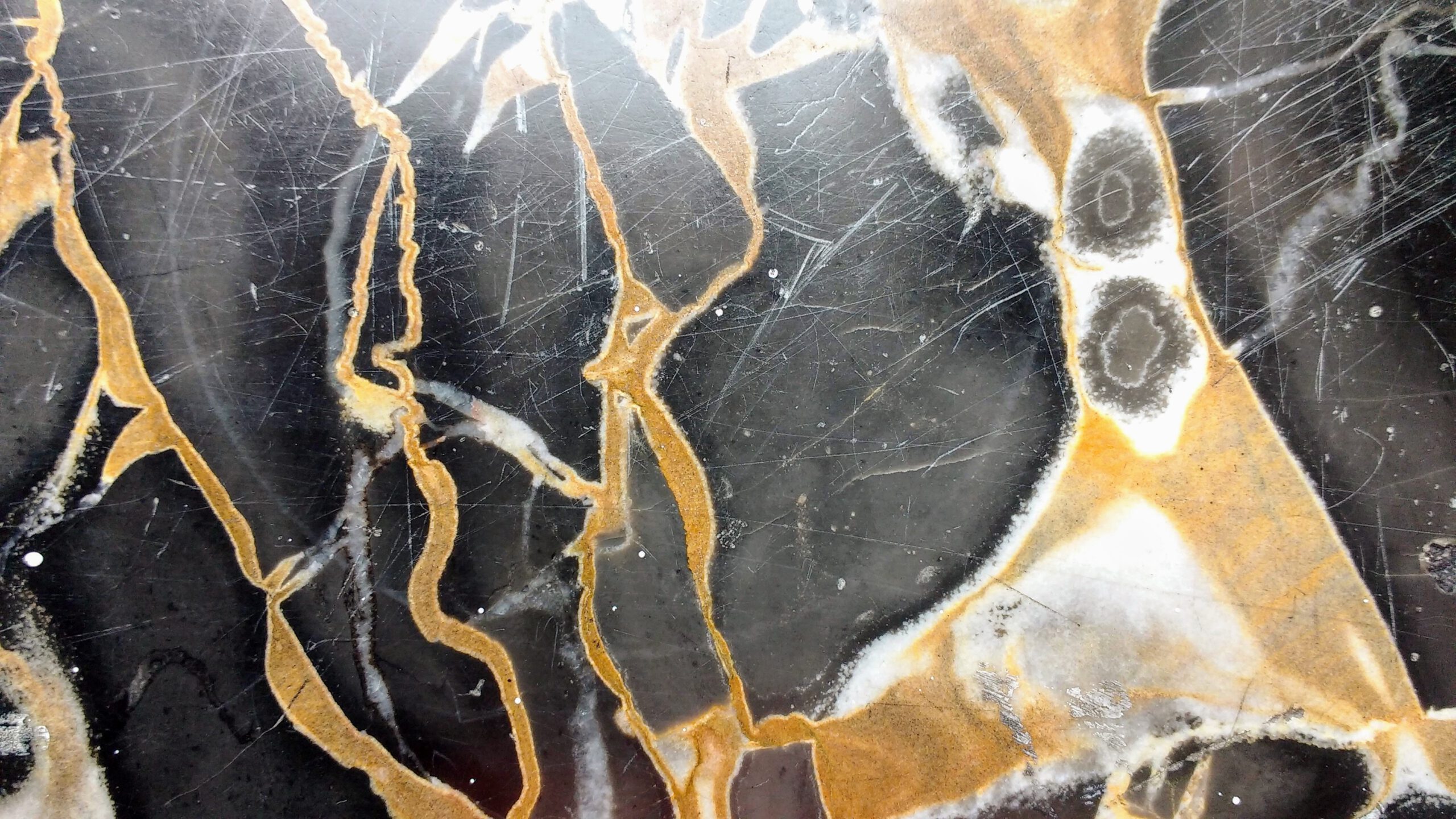
gold im bach
The title gold im bach arose from a discussion I had with Karin Schistek during a trip in summer 2019 to Camogli, near Genoa, Italy. I had made a mock-up of this new piece with my algorithmic composition software slippery chicken and we’d been listening to it in the background over a cheap bluetooth…
-
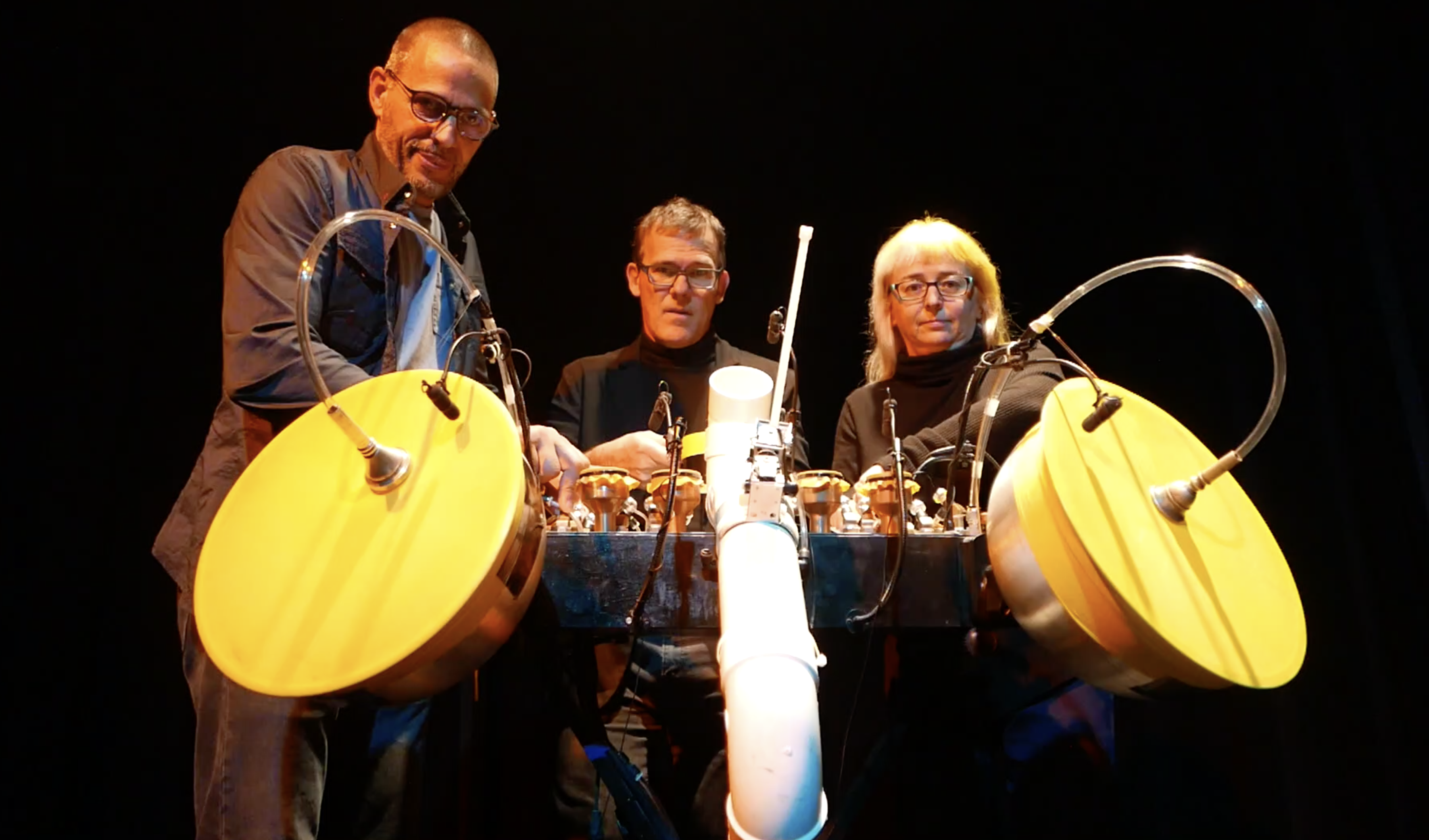
ma bel
ma bel, my new piece for Jean-Francois Laporte’s compressed-air instrument, the babel table, was premiered in Canada at the Conservatoire de Musique de Montréal on October 4th 2019. The featured image above is of Jean-Francois (left) along with Quasar Quartet comrades Jean-Marc Bouchard and Marie-Chantel Leclair. What they’re staring at is a laptop. Using MaxMSP,…
-
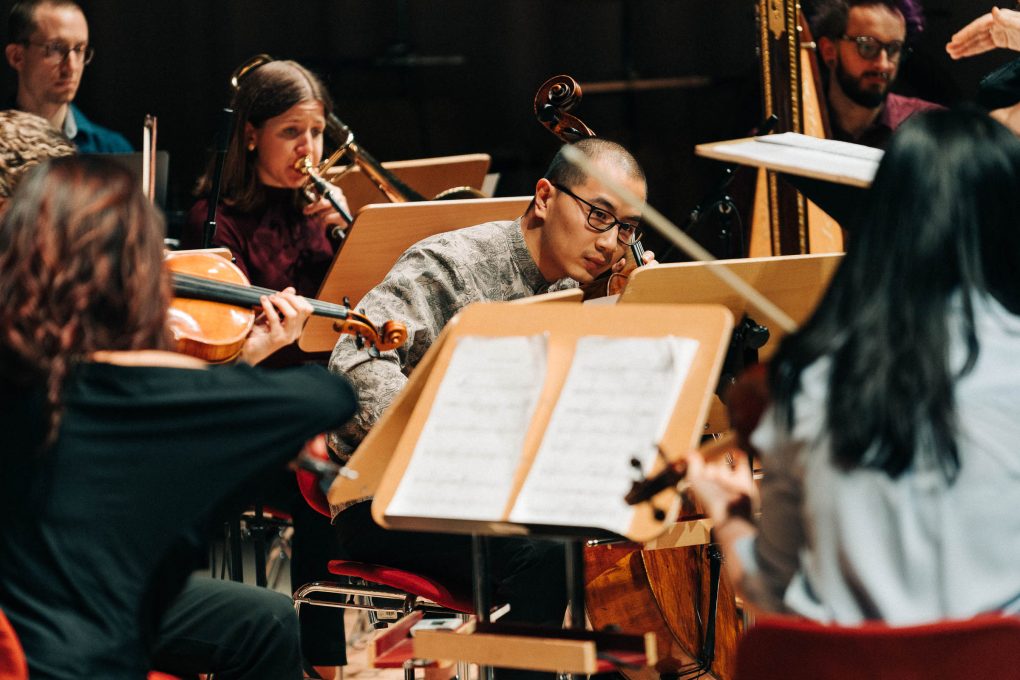
orchestration algorithm in
“days with glass edges”days with glass edges (chasing the butterflies in my wallpaper), for fifteen-piece ensemble and 4-channel electronics, was premiered at the NOW! Festival by the Folkwang Modern ensemble conducted by Eva Fodor in the Essen Philharmonic on October 26th 2019. A documentation recording is given above and here is a short pre-performance discussion with my…
-
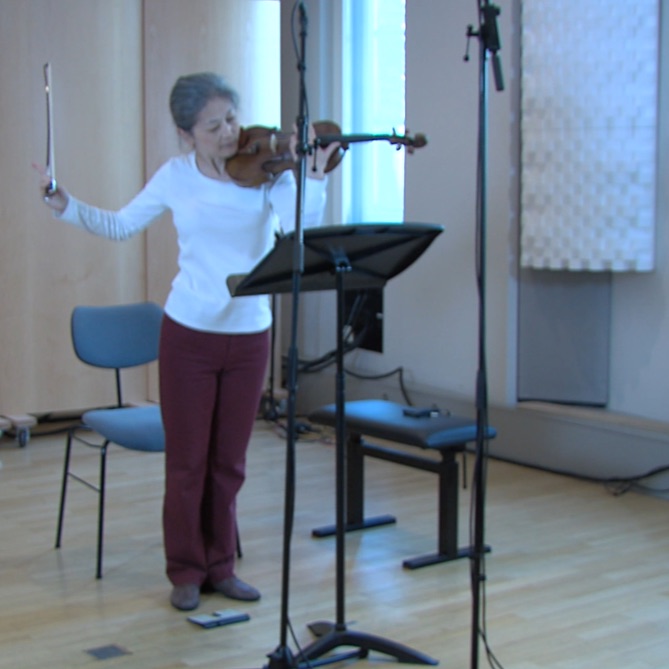
Premiere of Durchhaltevermögen in Münster
In May 2018 I was in Münster with edimpro colleagues Dimitris Papageorgiou and Karin Schistek to give improvisation workshops to students at the Hochschule für Musik. Mieko Kanno was with us to perform a lovely new work by Dimitris for electric violin and computer called deti. That work showcased Mieko’s research project ‘Modelling a Virtual…
-
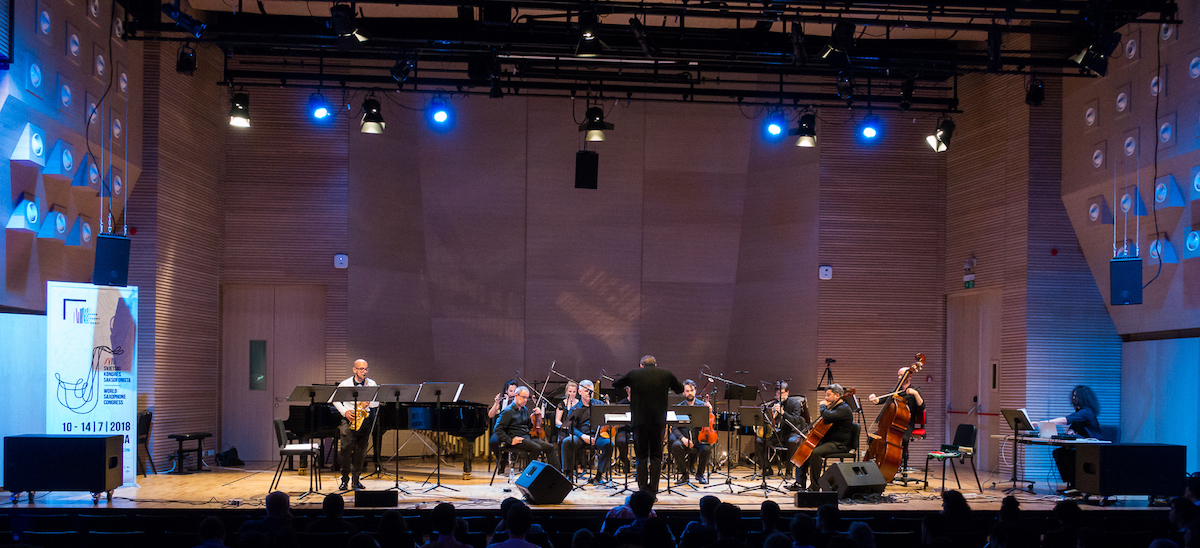
HOTPO
On July 12th 2018, Portuguese saxophonist Henrique Portovedo premiered HOTPO, my new piece for alto saxophone, ensemble, and electronics. The performance was part of the World Saxophone Congress and was given in Blagoje Bersa in Zagreb, Croatia. The Cantus Ensemble was conducted by new music saxophonist extraordinaire Lars Mlekusch. Here’s the programme note: Hinting at…
-
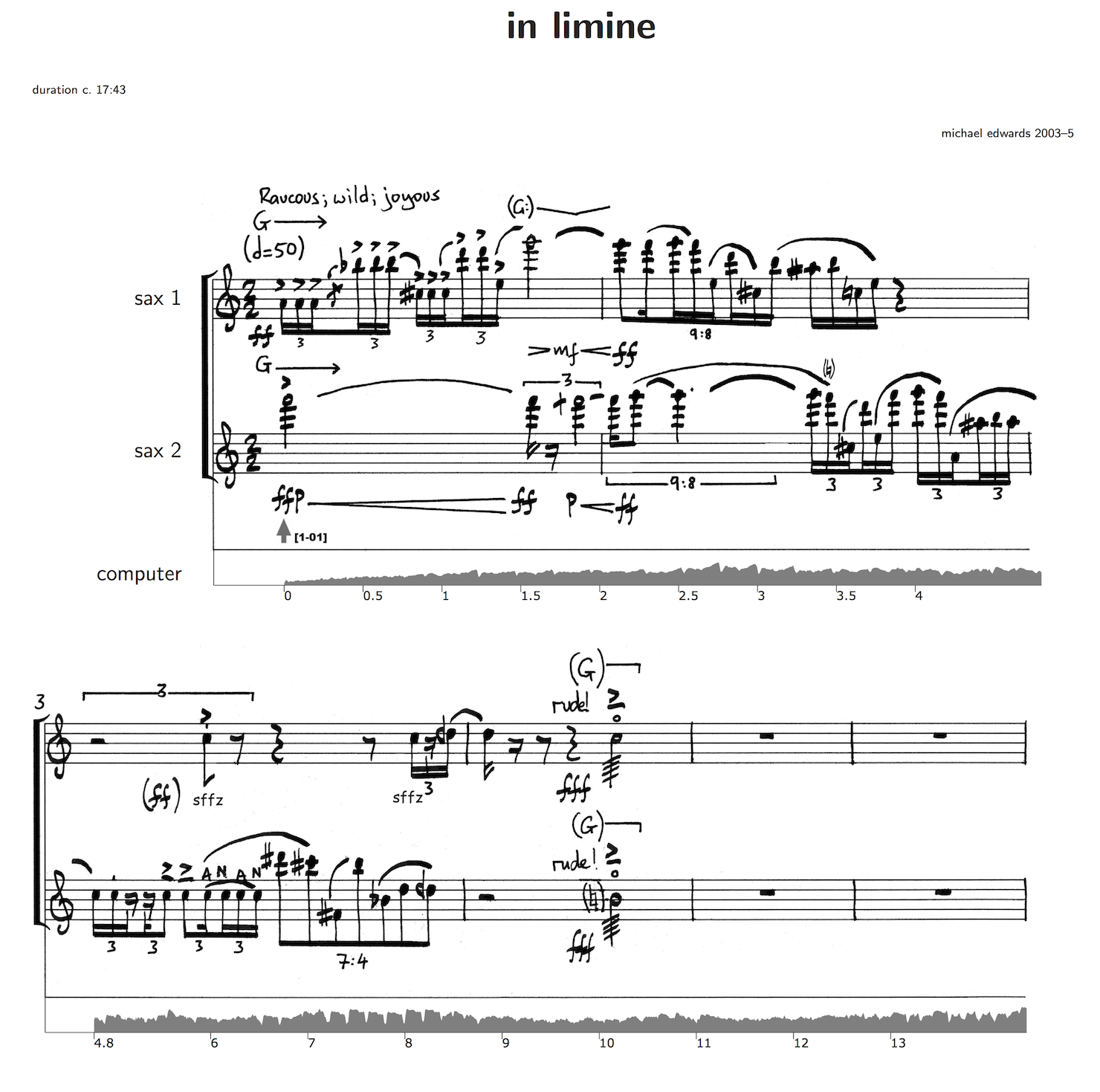
Recording “in limine” with Henrique Portovedo
Henrique Portovedo and I have just finished recording my piece in limine, for two soprano saxophones and computer, written 2003-2005. We’ve now got to work on the mix and master before Henrique puts it on a release he has planned of my complete works for saxophone and electronics. I’ll be working first of all on a…
-

hyperboles 3 in Montreal
Quasar Quartet, Le Gesu, Montreal, Canada, 19/1/17: It was disappointingly warm in Montreal. I’d promised Martin temperatures of -20C and below (it reached -33C on my last trip) but it hovered around zero for the duration of our seven-day stay this time (reduced by a day due to cracks in our airplane’s windscreen—glad that happened…
-
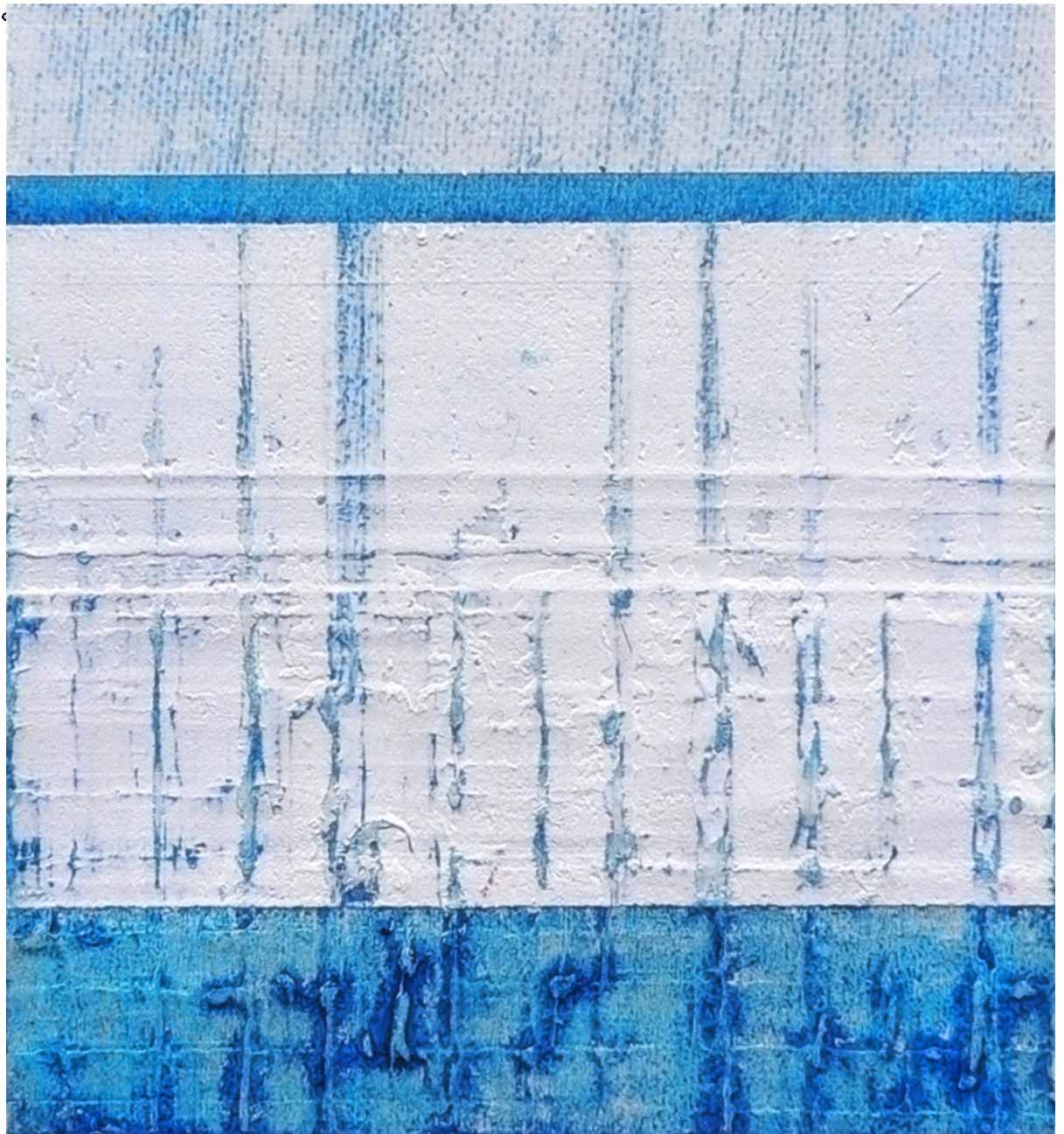
for rei as a doe: the making of the video: an online interview with the artists
Below is an interview I initiated online with the artists who made the above video to my algorithmic composition for rei as a doe. CI = Chante Inglis (animation) CL = Colin Lawson (painting) KS = Karin Schistek (piano) ME = Michael Edwards (composition) ME: What drew you to make a video to this music?…
-
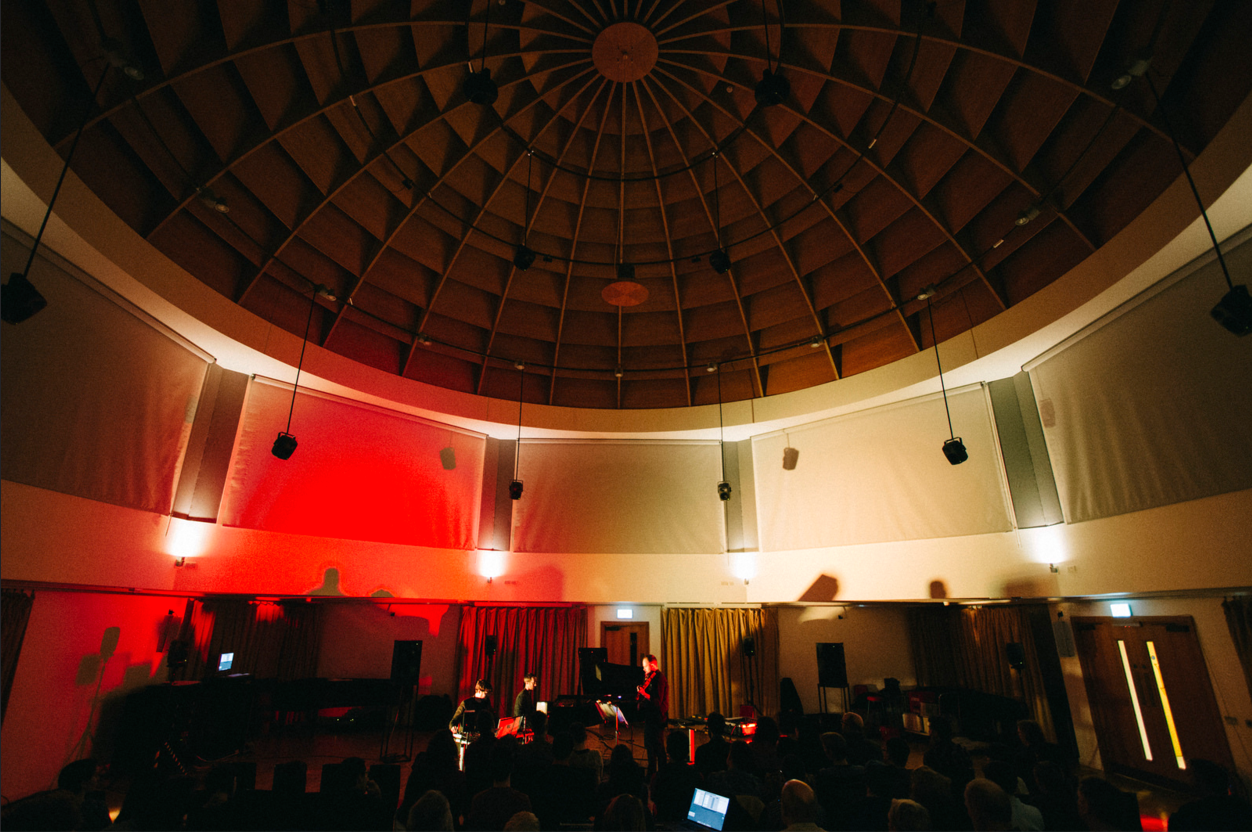
premiere of hyperboles 5, Birmingham
Ellen Fallowfield and I outed the latest version of my hyperboles project last weekend at the Crosscurrents Festival in Birmingham. After two days of intense rehearsals and development it was a real pleasure to play in the Dome of the Bramall Music Building. Scott Wilson and Annie Mahtani’s team are continuing and developing the Birmingham Electroacoustic Sound Theatre tradition…
-
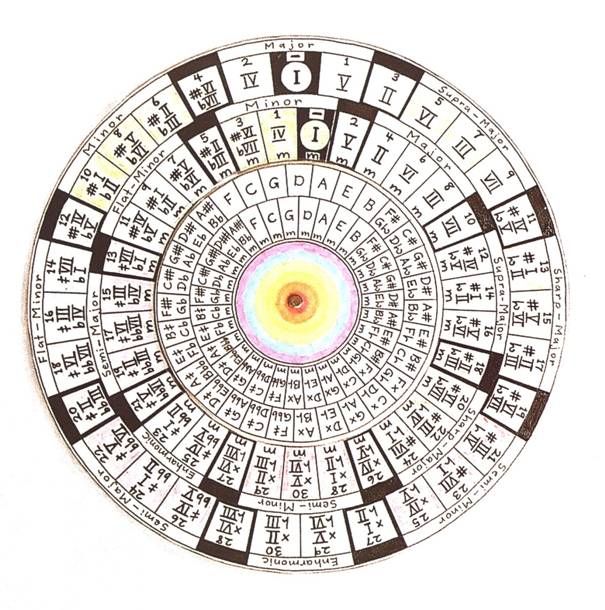
using auto-sequence to order chords: part 1
slippery chicken’s automatic chord sequencing algorithm creates an ordering for a set-palette’s sets (or chords) based on user-given dissonance and spectral centroid envelopes. The terms set and chord here will be used interchangeably to mean essentially the same thing (a collection of pitches to be used harmonically), though in both music theory and in slippery…
-
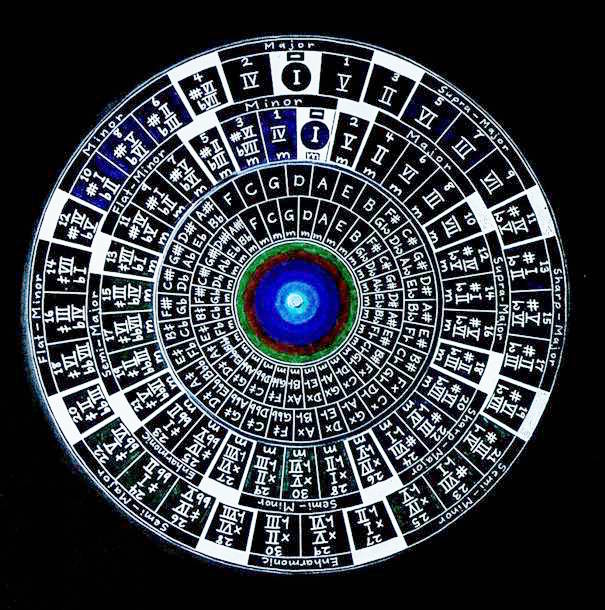
using auto-sequence to order chords: part 2
Back to part 1 auto-sequence examples and analysis The following examples process a set-palette created from a harmonic reduction by Emilios Cambouropoulos of Messiaen’s Quartet for the End of Time (Quartet VII).* The examples intermingle explanations of Common Lisp code and print statements with music notation output created directly from calls to slippery chicken’s Common Music Notation…
-
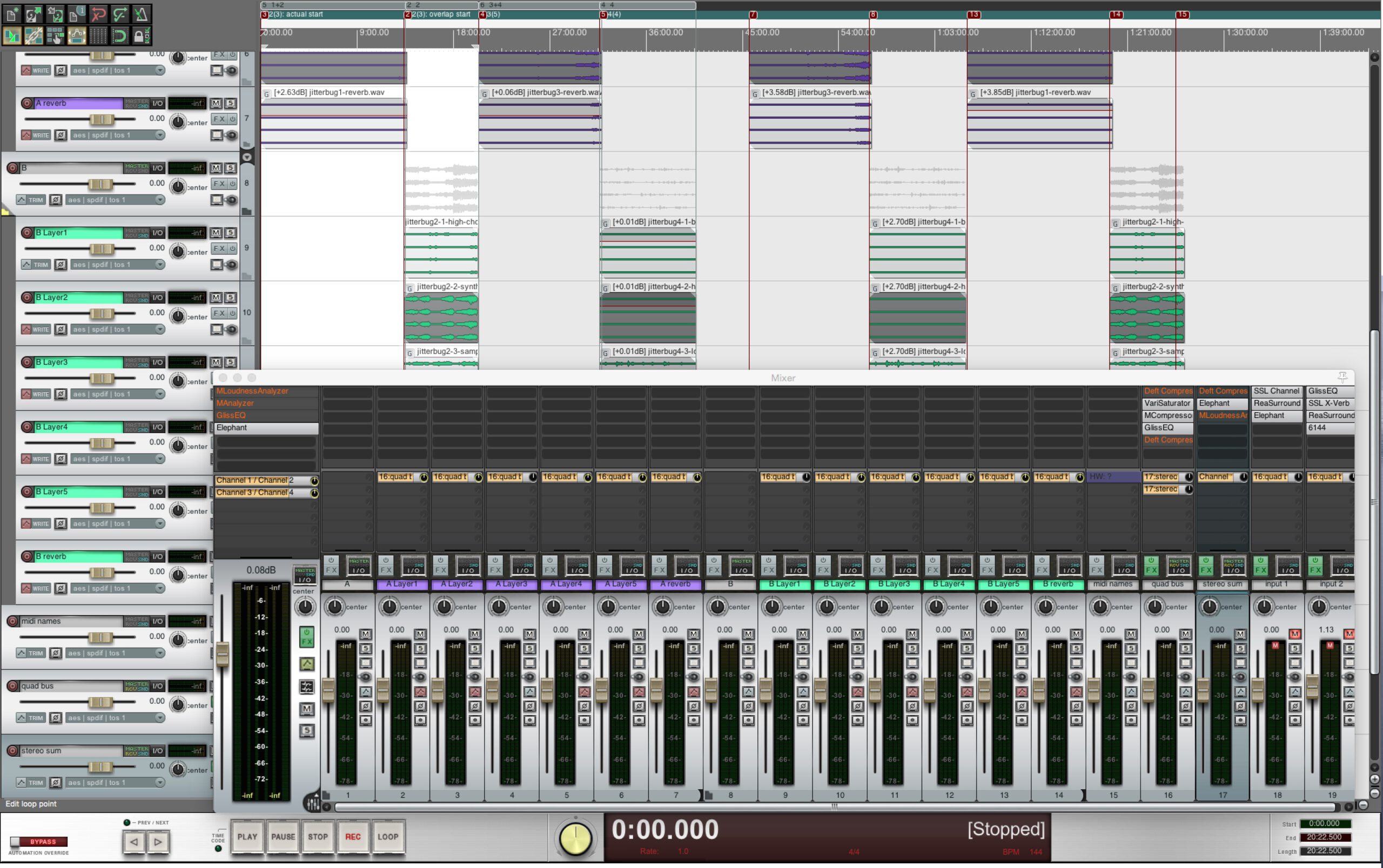
The use of Reaper and MIRA in jitterbug
jitterbug is a four-movement four-channel work/album for computer, with or without improvising musicians. It is documented more generally but in detail in another blog post. Here I’m going to concentrate on some aspects of the use of Reaper in both the production and performance of this 40-minute work. I’m turning to Reaper more and more…
-
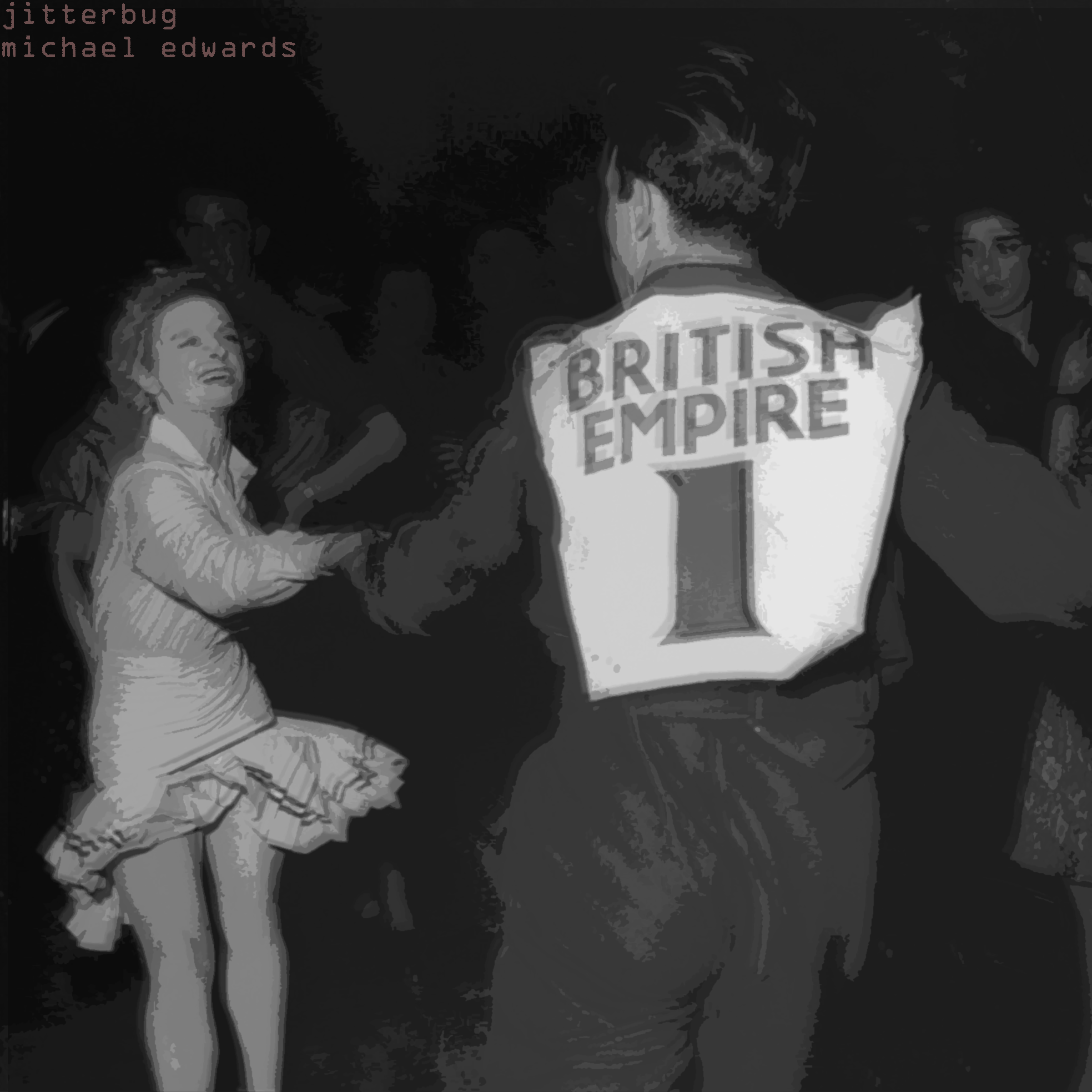
jitterbug
(aka four views of a rhythmic-structural procedure based on iterated proportions of 6:3:5:4) jitterbug is a four-movement four-channel work/album for computer, with or without improvising musicians. It was created with my slippery chicken algorithmic composition software and premiered at Museum Siam, Bangkok, on November 29th 2015 as part of the As((ear))n exhibition of…
-
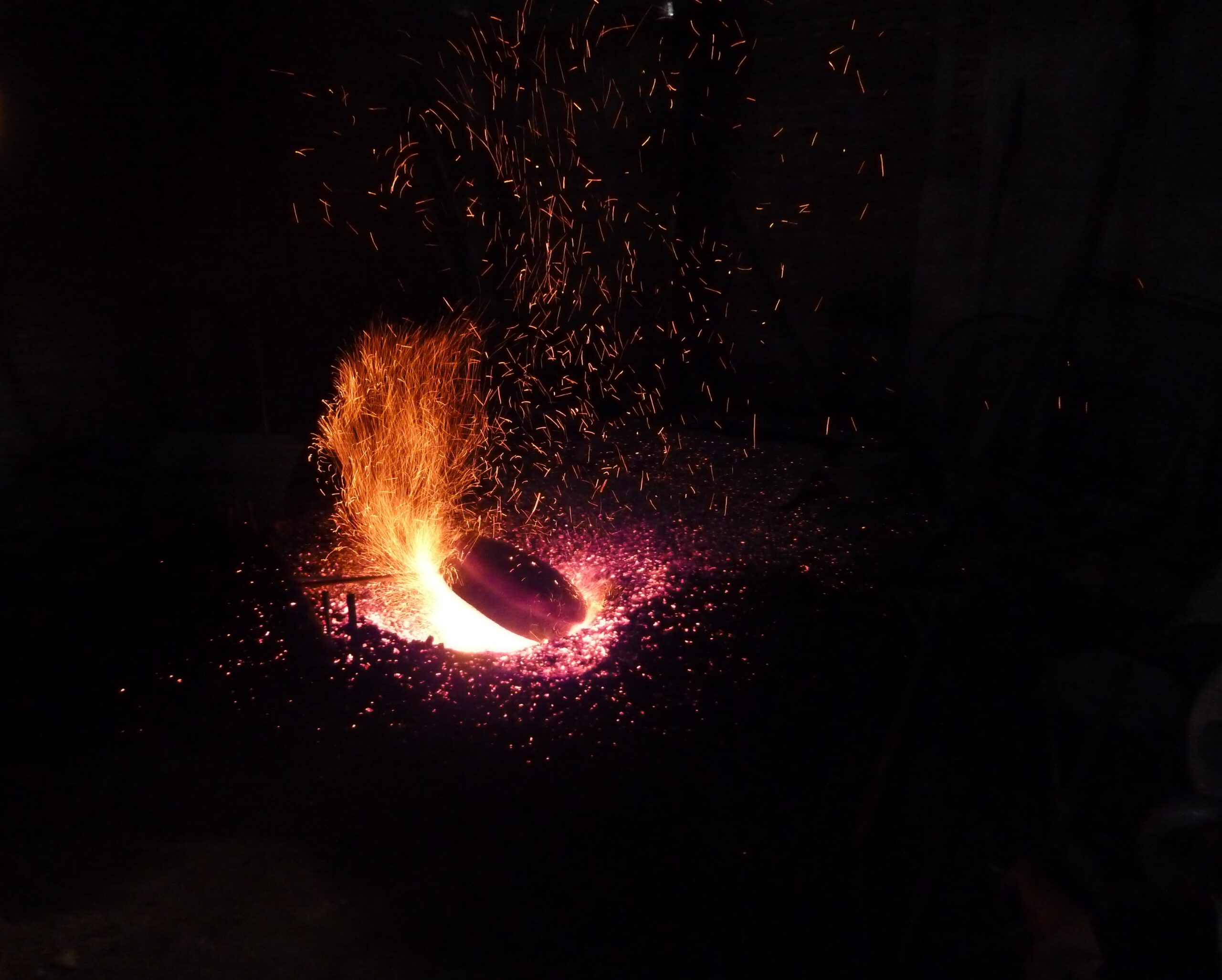
Music for Parallel Consumption
Update, January 2016: This project has now been released on bandcamp It’s a lovely word but a little overused by self-help and marketing gurus: serendipity. Those familiar with talks on my slippery chicken algorithmic composition software are no doubt aware of the claims I make for the explorative potential of such systems. I argue…
-
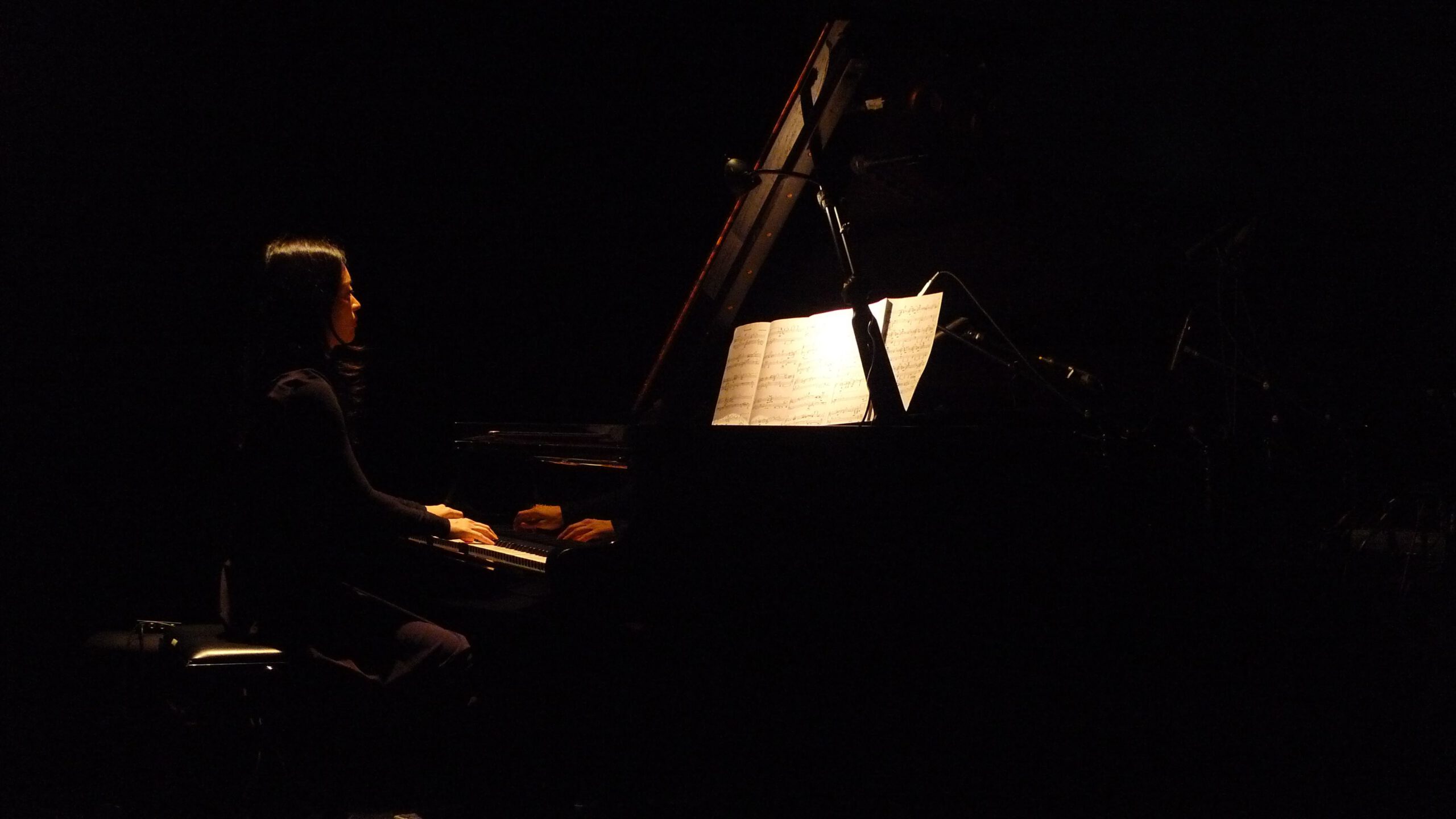
for rei as a doe: annotated timeline
Artists Colin Lawson and Chante Inglis are working on a video using Colin’s paintings as visuals alongside my 40-minute piano and computer piece for rei as a doe. This has already been documented but in order to give Chante and Colin some orientation points in this long work I did an analysis of the pre-compositional structuring, in…
-

The mNAP sound installation
Experiencing this sound installation involves stepping into a custom-built soundproofed box (the mNAP) and listening to the twelve-minute piece I made on stereo headphones. Simple feedback on the piece can made by participants via a custom iPad interface I programmed using MaxMSP and the Mira app. The audio file that mNAP participants hear inside the box…
-
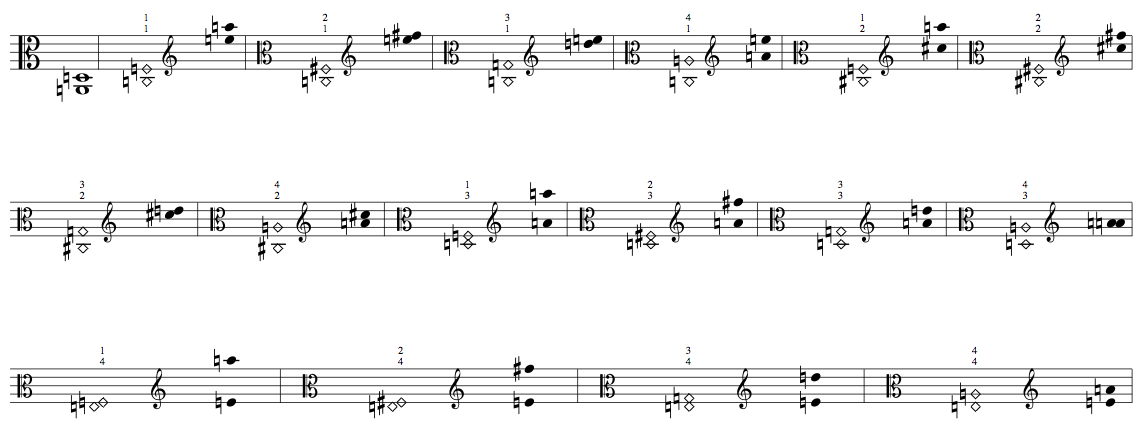
Lisp Code to generate double harmonics
In response to Russell Snyder’s request for my code to generate double harmonics (natural) on the viola d’amore, I’ve abstracted the following from my piece 24-7: freedom fried. This was written for Garth Knox on the viola d’amore and was featured on a 2010 Wergo DVD. Here’s an extract: Apologies for the light commenting only…
-
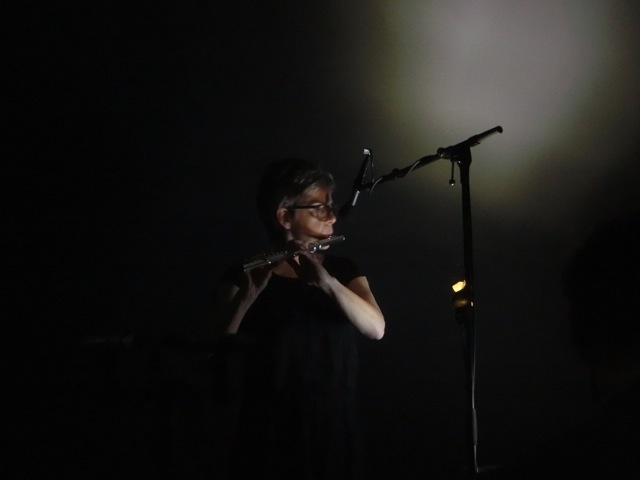
hyperboles are the worst thing ever
(aka Epimenides would have been gutted)
AmsterdamSince August 2013 I’ve been working on hyperboles, a series of pieces that allow musicians to tweak the algorithm parameters that are used to generate the work’s score, sound files, and real-time processing. A software interface allows the creation of different versions of the piece with durations ranging from c. 15 to 52 minutes. It’s an invitation…
-
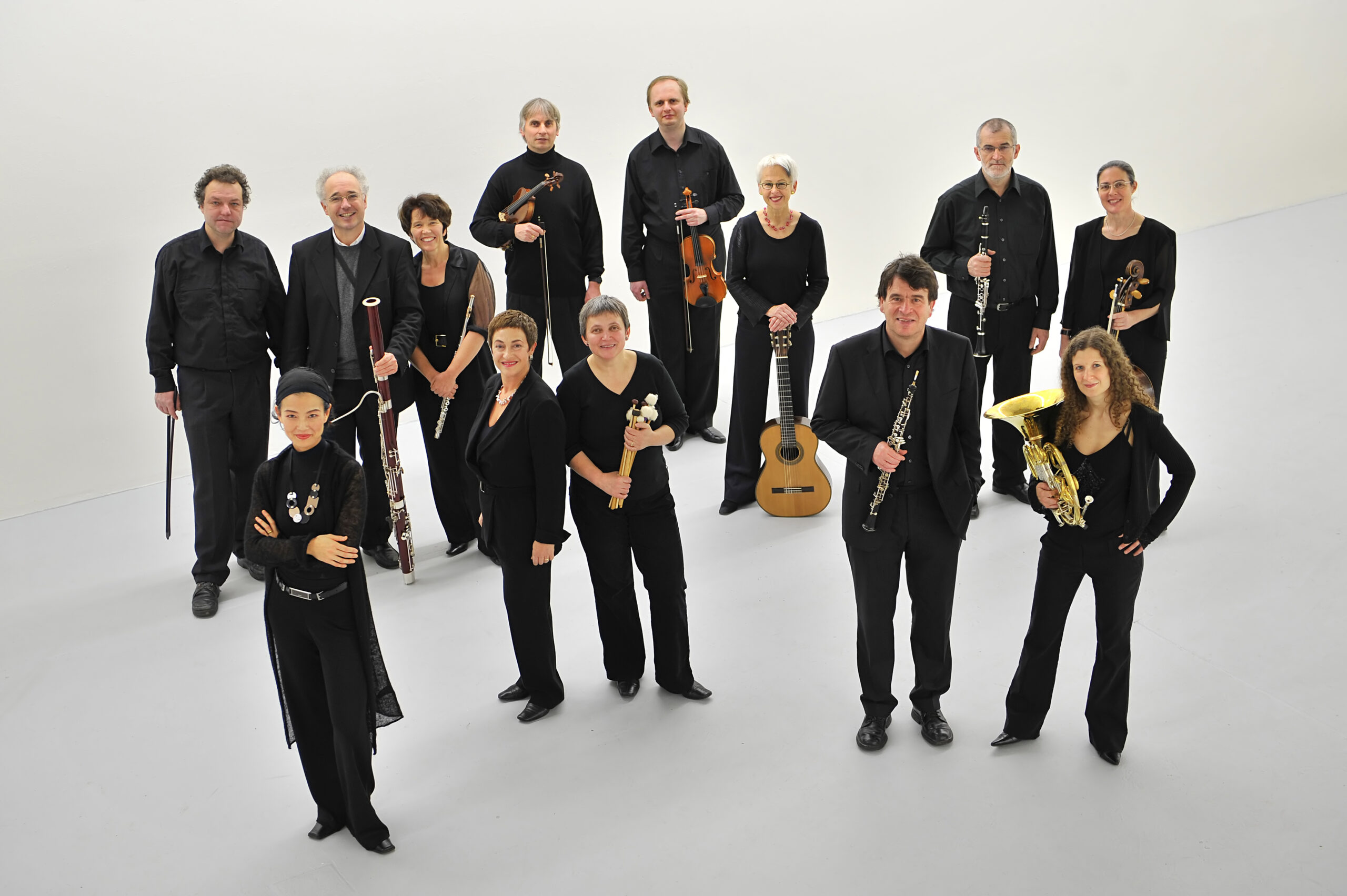
you are coming into us who cannot withstand you, Freiburg
For Ensemble Aventure, Freiburg, Germany. The title of this piece is taken from the poem “Final Notions” by Adrienne Rich (1929-): It will not be simple, it will not take long It will take little time, it will take all your thought It will take all your heart, it will take all your breath It…
-
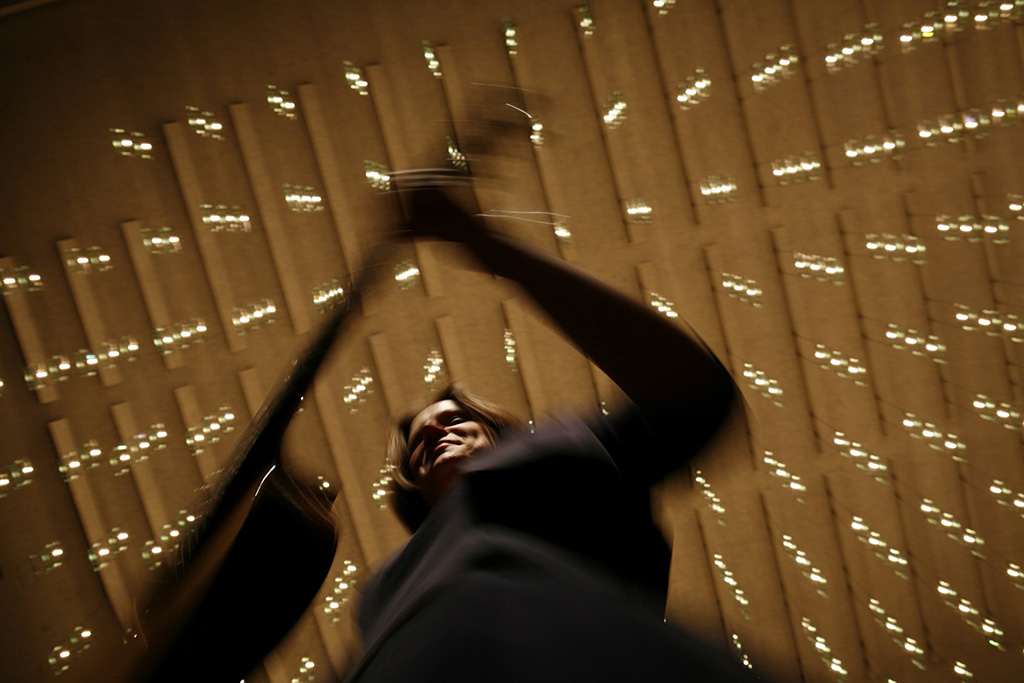
don’t flinch
Essentially, “don’t flinch” for guitar and computer is a three-part mensural canon, but similar to late Mediaeval and Renaissance isorhythmic techniques, melodic material is repeated along with a rhythmic sequence of differing length. This is one of the simplest algorithms for a piece I’ve ever written, so I thought it would make a good candidate…
-
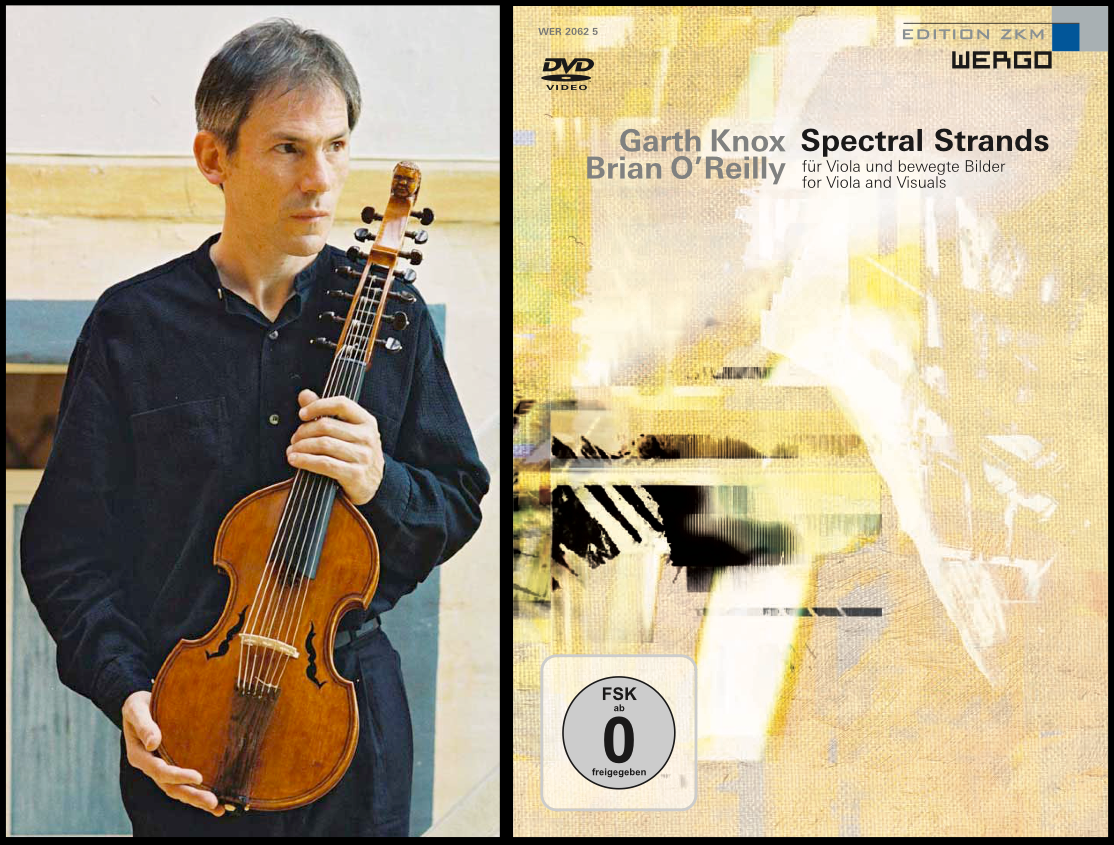
5.0 mastering with the TC System 6000
To get to know the various dynamics, EQ, and reverb effects on the TC System 6000 I tried a mastering session with the 5.0 mix files of my piece 24/7: freedom fried for viola d’amore and computer. This was recorded in September 2006 at ZKM Karlsruhe, Germany, by Garth Knox. It was (is?) to be…
